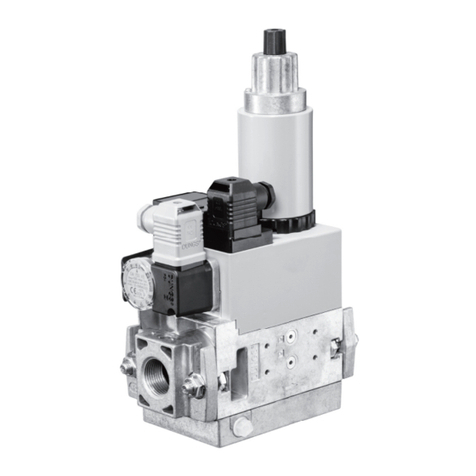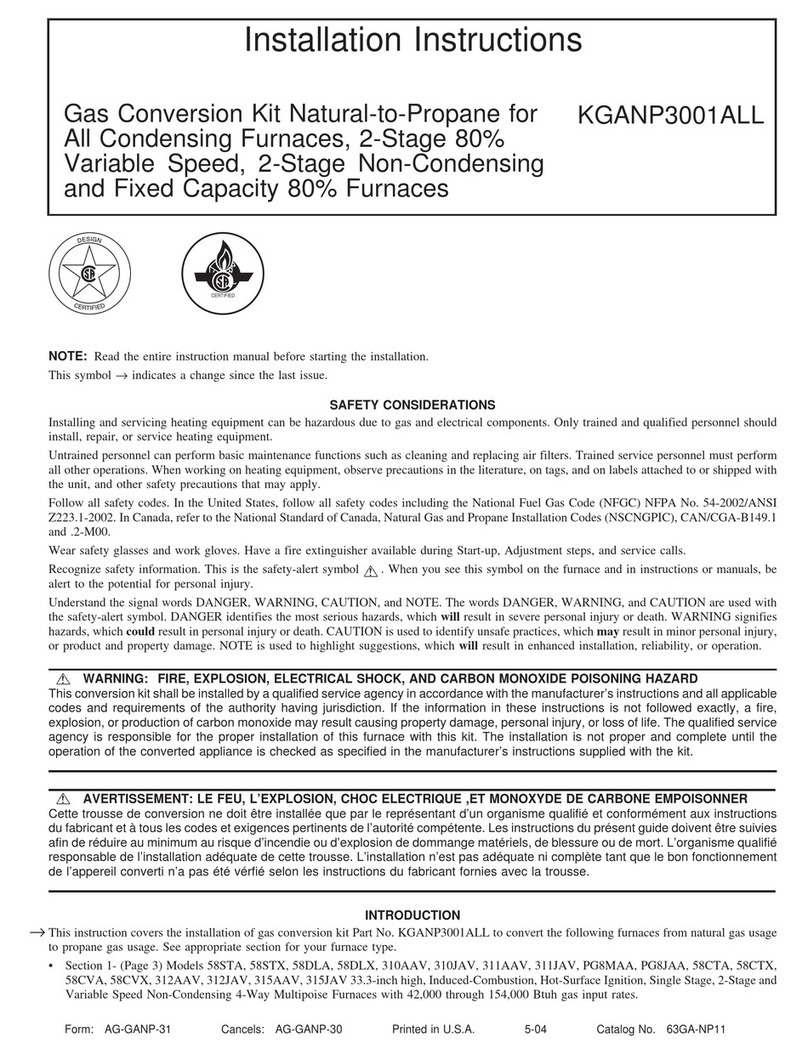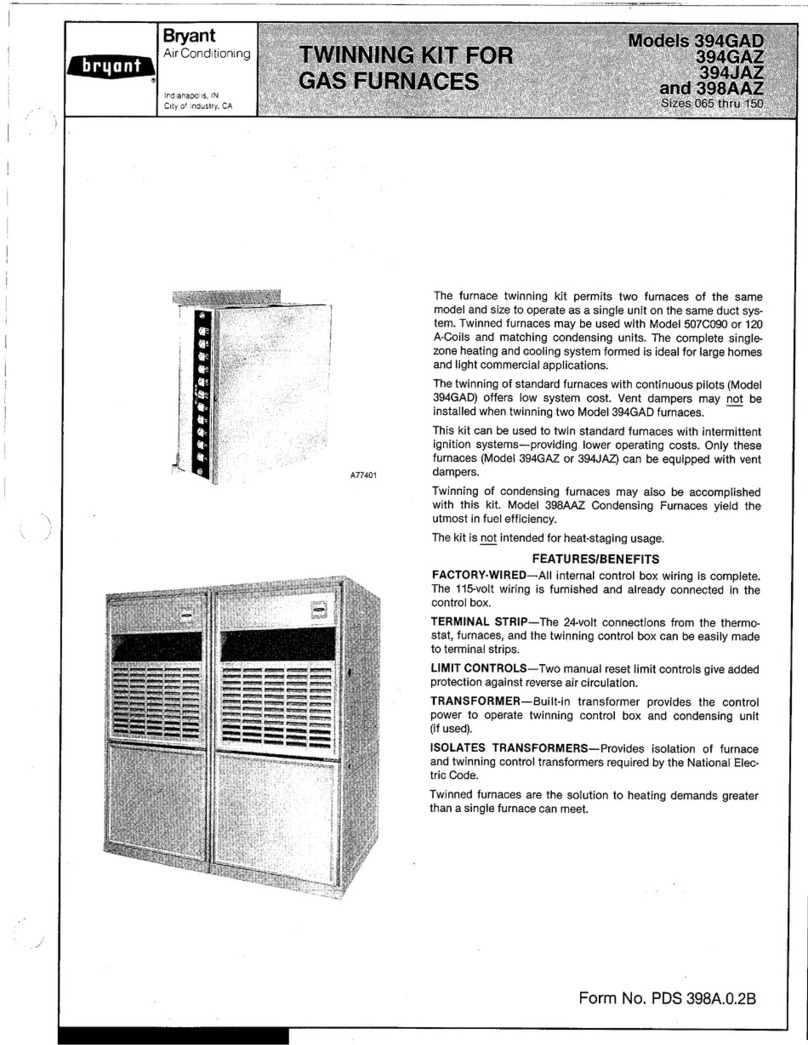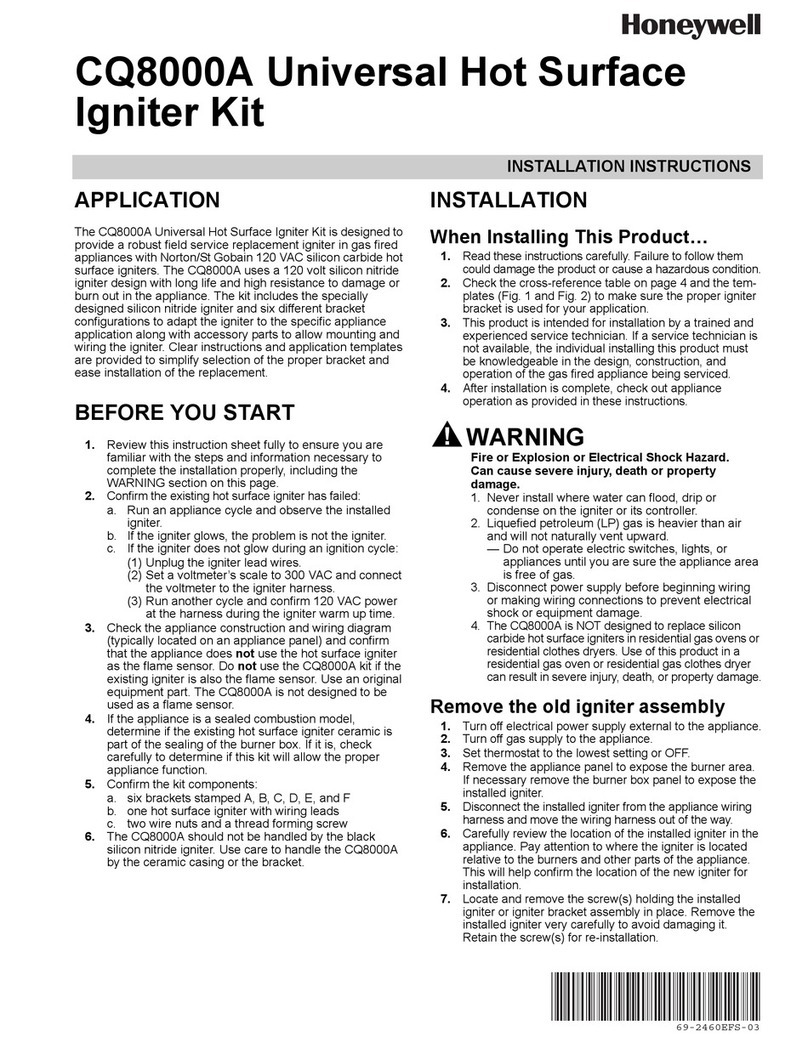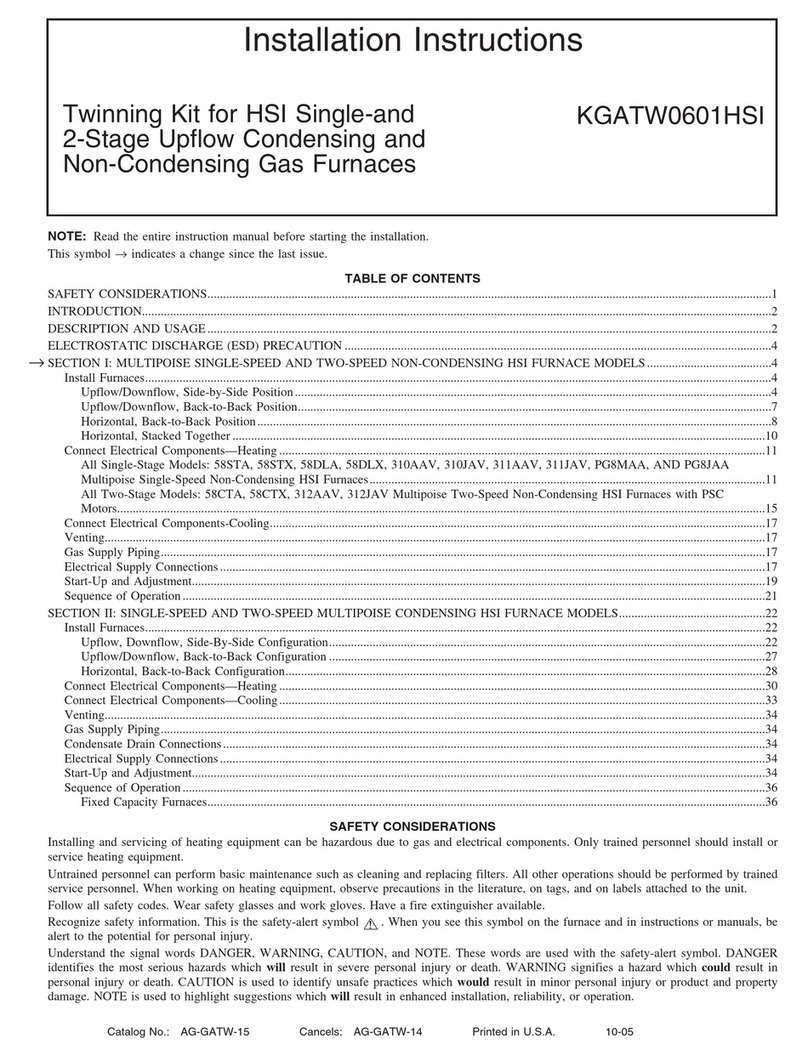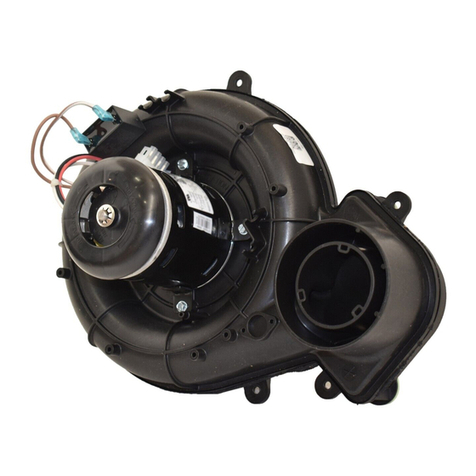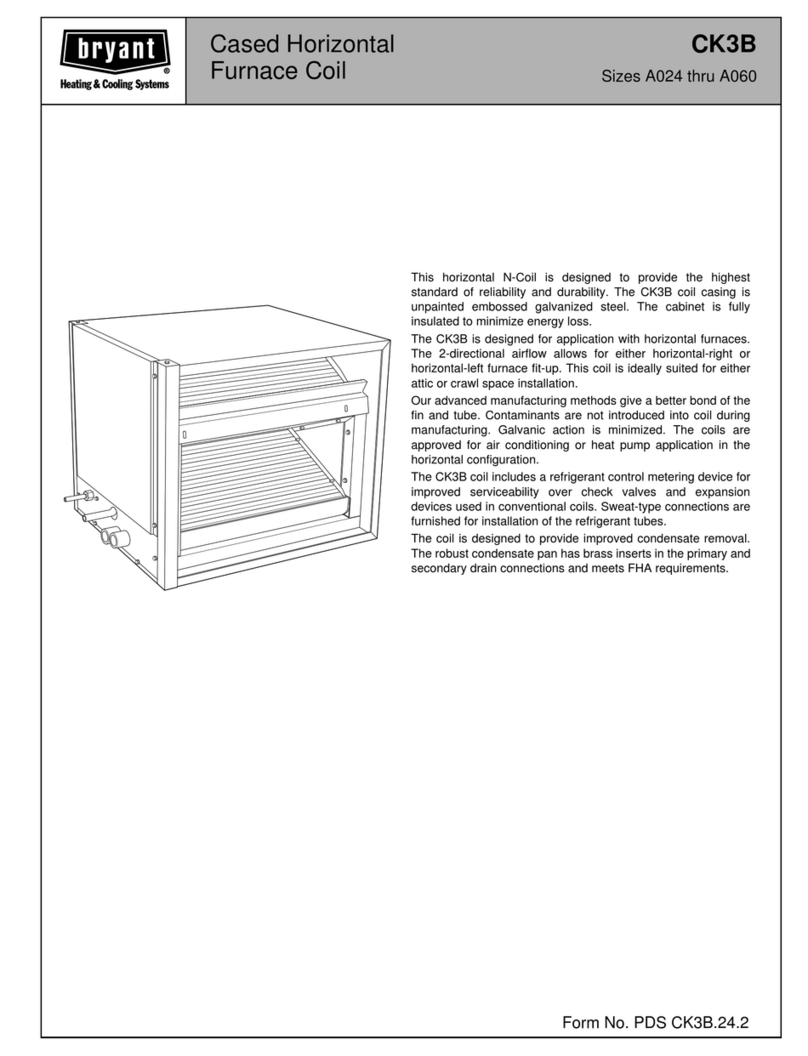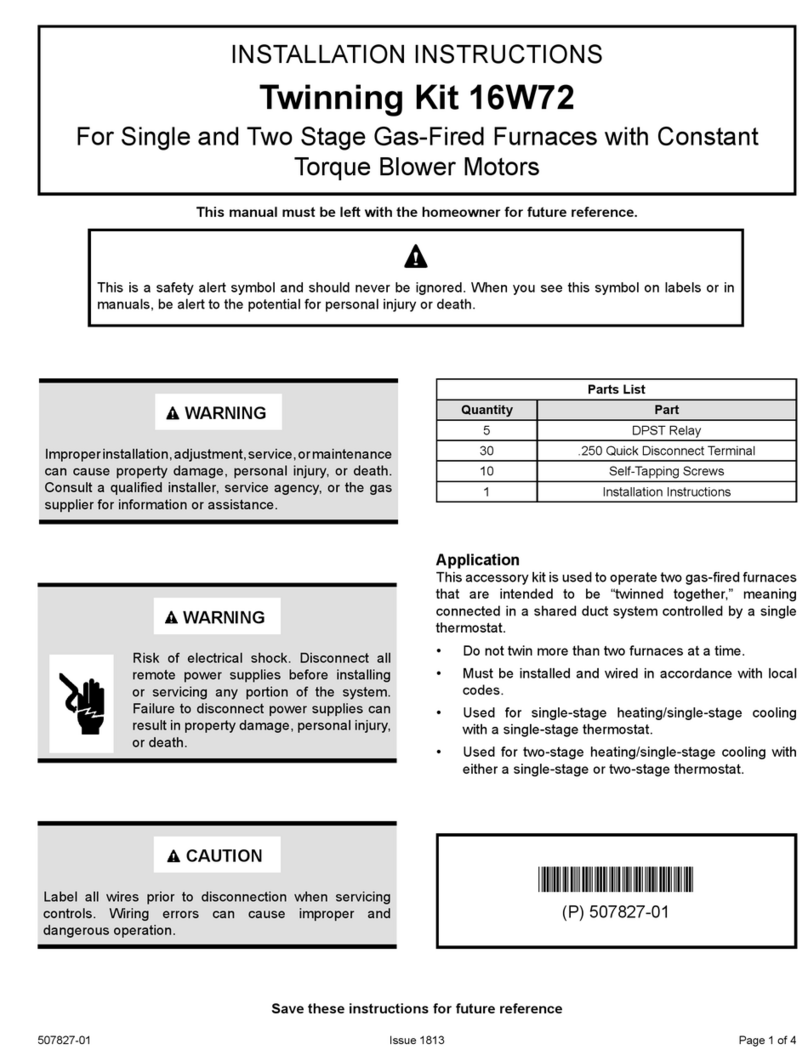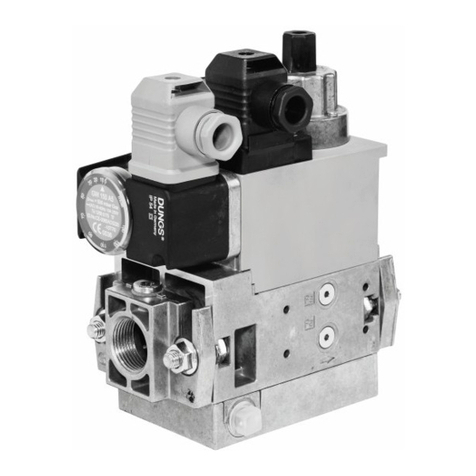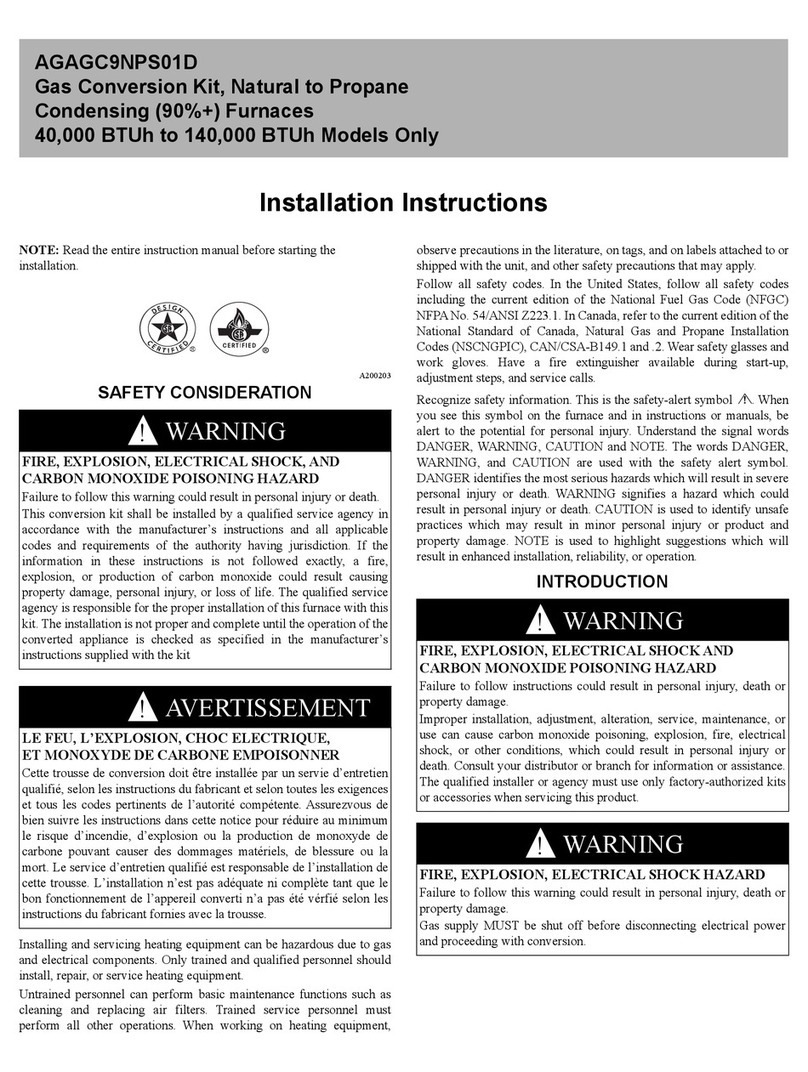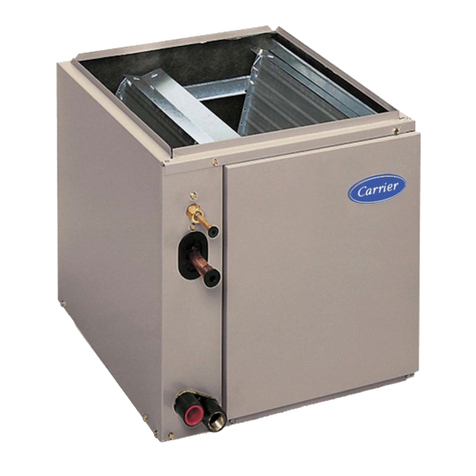
443 06 2403 01 6/12/2018
NAHA00601WK
INSTALLATION INSTRUCTIONS
TWINNING KIT
Please read these instructions completely before starting the
installation.
SAFETY CONSIDERATIONS
!WARNING
FIRE, EXPLOSION, ELECTRICAL SHOCK AND CARBON
MONOXIDE POISONING HAZARD
Failure to follow this warning could result in personal injury,
death and/or property damage.
Improper installation, adjustment, alteration, service,
maintenance, or use can cause carbon monoxide poisoning,
explosion, fire, electrical shock, other conditions, which could
result in personal injury or death. Consult a qualified service
agency, local gas supplier, or your distributor or branch for
information or assistance. The qualified service agency must
use only factory−authorized kits or accessories when
modifying this product.
WARNING
!
FIRE, EXPLOSION, ELECTRICAL SHOCK, AND CARBON
MONOXIDE POISONING HAZARD
Failure to follow this warning could result in dangerous
operation, personal injury, death, or property damage.
Furnaces shall NOT be twinned (i.e. tandem or staged
operation) unless approved in factory technical specifications
literature for the furnace. A factory authorized, field−supplied
Twinning Kit MUST be used. Consult furnace pre−sale
literature for specific models approved for twinning and the
correct twinning kit. Twinned furnaces must be installed on
both a common supply AND a common return duct system
as shown in the Twinning Kit Installation Instructions. Only
two furnaces can be twinned on a common supply and
return duct system using a factory authorized twinning kit.
Installing and servicing heating equipment can be hazardous
due to gas and electrical components. Only trained and
qualified personnel should install, repair, or service
heating equipment. Untrained personnel can perform basic
maintenance functions such as cleaning and replacing air
filters. All other operations must be performed by trained
service personnel. When working on heating equipment,
observe precautions in literature, on tags, and on labels
attached to or shipped with unit and other safety precautions
that may apply.
These instructions cover the minimum requirements and
conform to existing national standards and safety codes. In
some instances, these instructions exceed certain local codes
and ordinances, especially those that may not have kept up
with changing residential construction practices. We require
these instructions as a minimum for a safe installation.
Follow all safety codes. In the United States, follow all safety
codes including the current edition of the National Fuel Gas
Code (NFGC) NFPA No. 54/ANSI Z223.1. In Canada, refer to
the current edition of the National Standard of Canada, Natural
Gas and Propane Installation Codes (NSCNGPIC),
CAN/CSA−B149.1 and .2. Wear safety glasses and work
gloves. Have a fire extinguisher available during start−up,
adjustment steps, and service calls.
Recognize safety information. This is the safety−alert symbol
. When you see this symbol on the unit and in instructions or
manuals, be alert to the potential for personal injury.
Understand the signal words DANGER, WARNING, and
CAUTION. These words are used with the safety−alert symbol.
DANGER identifies the most serious hazards which will result
in severe personal injury or death. WARNING signifies hazards
which could result in personal injury or death. CAUTION is
used to identify unsafe practices which may result in minor
personal injury or product and property damage. NOTE is used
to highlight suggestions which will result in enhanced
installation, reliability, or operation.
TABLE OF CONTENTS
SAFETY CONSIDERATIONS 1................................
TABLE OF CONTENTS 1.....................................
INTRODUCTION 2..........................................
DESCRIPTION AND USAGE 2................................
ELECTROSTATIC DISCHARGE (ESD) PRECAUTION 4..........
MULTIPOISE SINGLE−SPEED AND TWO−SPEED
NON−CONDENSING HSI FURNACE MODELS 4................
INSTALL FURNACES 5......................................
DIMENSIONS 5.............................................
CONNECT ELECTRICAL COMPONENTS—HEATING 11..........
CONNECT ELECTRICAL COMPONENTS−COOLING 15..........
VENTING 15................................................
GAS SUPPLY PIPING 15......................................
ELECTRICAL SUPPLY CONNECTIONS 15......................
START−UP AND ADJUSTMENT 16.............................
SEQUENCE OF OPERATION 19...............................
!WARNING
ELECTRICAL SHOCK AND FIRE HAZARD
Failure to follow this warning could result in personal injury,
death, and/or property damage.
Turn off the gas and electrical supplies to the furnace and
install lockout tag before performing any installation or
modification. Follow the operating instructions on the label
attached to the furnace.
CUT HAZARD
Failure to follow this caution may result in personal injury.
Sheet metal parts may have sharp edges or burrs. Use
care and wear appropriate protective clothing and gloves
when handling parts.
CAUTION
!

